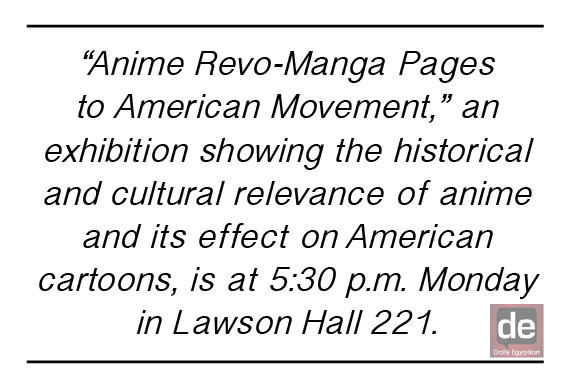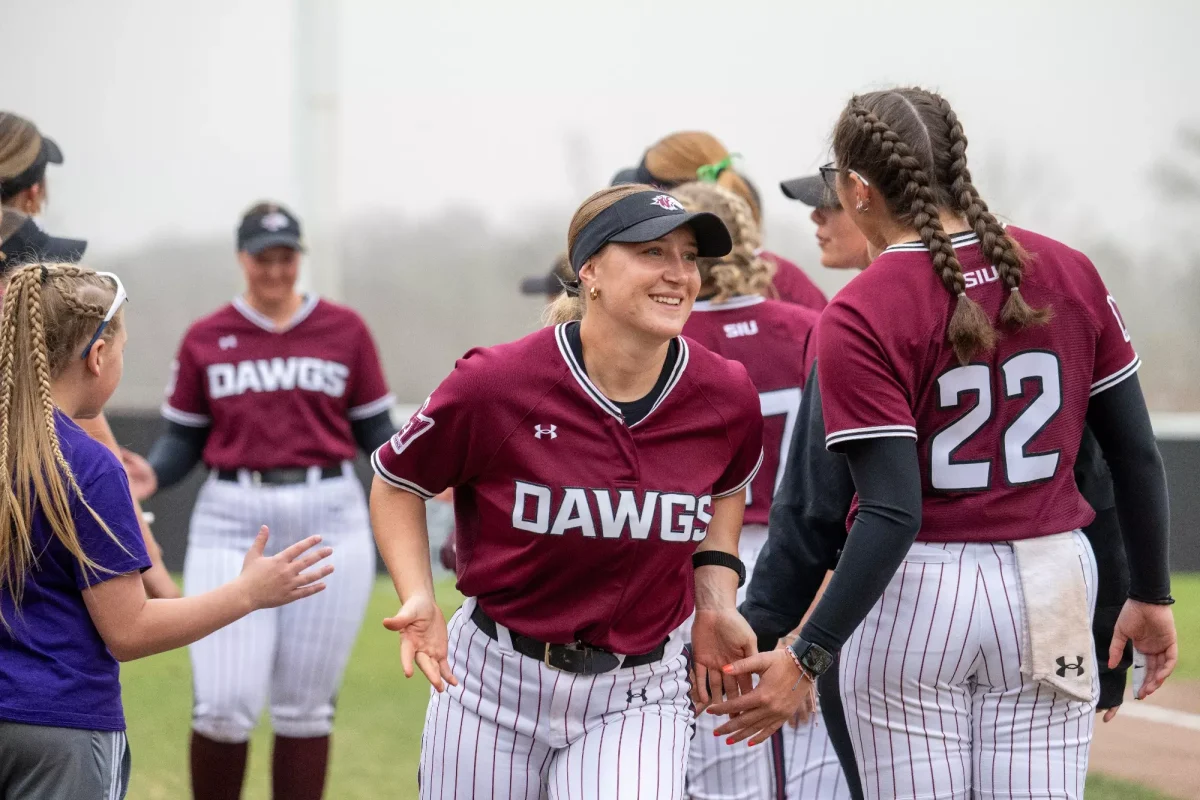American cartoons inspired by Japanese anime

April 12, 2015
Some people may have never noticed Japanese influences in Cartoon Network shows “Powerpuff Girls” or “Dexter’s Laboratory.”
“Anime Revo-Manga Pages to American Movement,” an exhibition showing the historical and cultural relevance of anime and its effect on American cartoons, is at 5:30 p.m. Monday in Lawson Hall 221.
“The presentation’s main purpose is to inform audiences, who may not be interested in anime, or have certain perspectives about anime, about what anime is and what it does,” said John Flowers, president of the SIU Anime Club.
Advertisement
Flowers, a doctoral student in philosophy from Oak Park, said the Japanese style has become more popular in America after the Toonami block of programming on Cartoon Network in the late 1990s. Shows such as “Voltron” and “Gundam Wing” put many first-time American eyes on anime. Eventually, American animators began making similar shows such as “The Powerpuff Girls,” “Teen Titans” and “Samurai Jack.”
“You get a lot of the exaggerated eyes and emotional expressions through imagery that were more common in anime, but are now a staple of American animation,” said Flowers, who is studying Japanese aesthetics for his doctorate.
He said comic books are also borrowing from the style. An example he used was an issue of Green Lantern showing the superhero talking about his love of anime and making constructs of anime designs.
“It’s a response to the recognition that this kind of stuff is something the American people were interested in, so other related fields began to emulate the aesthetic and designs,” Flowers said.
A.J. Soriano, president of the United Asian-American Council, said shows such as “Attack on Titan” have resonated among Western watchers because of the violence.
“Attack on Titan” began as manga, a Japanese comic, in 2009 and made the jump to anime in 2013. The story centers on a world where cities have erected huge walls to keep out Titans, giant, grotesque humanoids who eat humans. Flowers, who began trading anime VHS tapes in high school, said this is because high action and slap-stick comedy are always popular in American culture, so that is what Americans presume anime to be.
He said people know other kinds exist, but they think it is not anime. Series such as “Ghost in the Shell” deal with existential crises and humanity while having action, and have become more popular.
Advertisement*
This is a problem because people first see the violent anime and they like it, but do not branch out to other series, he said.
“In terms of what gets brought over, it tends to narrow the available anime for people to watch,” he said.
The films of Hayao Miyazaki have stood out as pieces of high-art among the more violent anime as Disney released them in the United States.
Flowers said his films, like “Howl’s Moving Castle” and “Princess Mononoke,” are more similar to “Saving Private Ryan” than a World War II television show. He said other series based on romance and love are not as popular here because they do not hold the attention of Americans.
Soriano, a senior from Downers Grove studying business management, said he grew up a fan of anime like “Cowboy Bebop,” “Dragon Ball Z” and, recently, “Sword Art Online.”
He said one of the reasons he got into the shows is because of the complex, fleshed-out characters, specifically in terms of good and evil.
“[Anime] was inspired by a lot of eastern Asian doctrines, where there isn’t necessarily a good and bad, like in the Buddhist religion, there is more of a middle ground,” he said. “In Western culture, you always make the distinction between good and bad, but when you go Far East there really isn’t that distinction. There are levels in everything.”
Flowers said this dates back to early Japanese literature, where characters were not evil from birth. They instead become good or evil based on their current situation or past experiences.
“Modern expressions in anime have their roots in older Japanese culture,” he said. “Anime is a carrying on of Japanese aesthetics in a new form.”
Austin Miller can be reached at amiller@dailyegyptian.com
Advertisement








